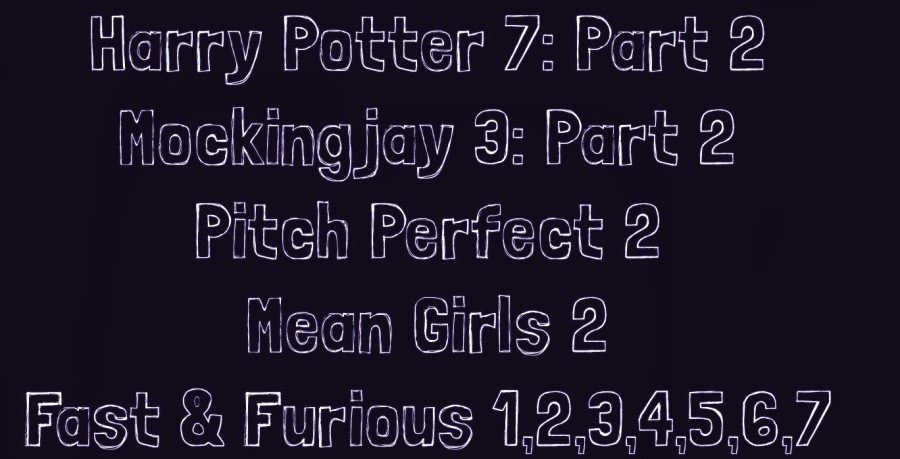Movie sequels: do we really need a fifth “Step-Up”?
Megan Murphy ’17 and Shaloni Pinto ’16 discuss the nature of movie sequels.
“The Empire Strikes Back.” “Zoolander 2.” “Taken 2.” All these Hollywood Blockbusters sequels are the cash crop for the industry. Sequels allow you to re-enter the world that you love from the original movie. Directors want their audience to interact and fall in love again with the characters they worked so tirelessly to create. If done right, a sequel can enhance the plot of the movie. However, quite commonly, sequels tend to ruin an entire story.
Take “National Treasure: Book of Secrets.” In the first movie, we followed Nicolas Cage’s character of Ben Gates as he discovered a treasure map on the back on the Declaration of Independence. Now in the sequel, Book of Secrets, he attempts to find the infamous Golden City, and somehow winds up kidnapping the President of the United States. In the opinion of Brophy junior Conner Nagaki, “That was probably one of the best sequels out there (that and Pokemon of course). Sure, the movie was probably designed to make loads of money for the franchise, but at least it was done right.”
Nagaki brings up an excellent point. Do directors really care about the franchise or the multi-million dollar industry that supports it?As freshman Monique Shilliday said, “Some sequels are clearly made to only to make money, like “Mean Girls Two” or “Pitch Perfect Two”. Others are really well done, like the “Harry Potter” or “Hunger Games” series.”
However, it might be the blatant effort of Hollywood directors and producers to cash upon an original story that give movie sequels their unfavorable opinions. Not only do the sequels only seem to be generated for capital but, they also seem to rehash the same plot of the original movie. Take, for example, the “Step Up” series. Each movie includes a boy and the girl who come from different classes, meet each other, the girl apparently seems to be dating another boy, complications arise and suddenly, the boy and the girl are both dancing together in an epic audition.
Although, this might seem like a fun and light-hearted plot, it’s repeated in every single film. But, it’s not as if Hollywood has run out of stories; there are thousands of screenwriters with thousands of ideas. The creation of sequels severely limits the risk-taking and groundbreaking aspects of film. It is easier for a producer to ok a film’s predecessor that had already generated millions of dollars rather than to approve a film that has an experimental sequence and rather mundane characters.
Many viewers continue to be frustrated with the release of newer sequels that seem to opt-out a good story for better CGI. The solution to our frustration is not to see a cash-crop of a sequel (perhaps not spending around ten dollars watching “Batman vs Superman” this weekend). After all, no studio would ever give the green on the production of seven “Fast and Furious” movies if they didn’t believe that that was what the people wanted. It’s time for viewers to escape from the comfort zone of sequels and spend their money watching independent films or original films.




